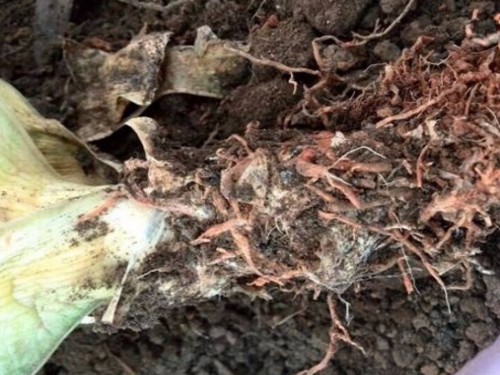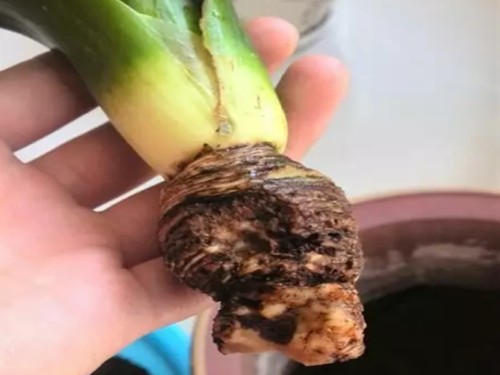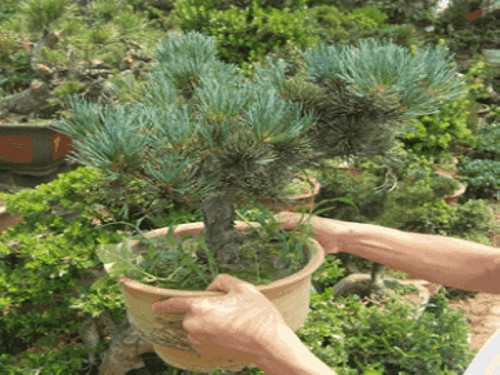What about the rotten root of tiger skin orchid?
Tiger orchid has a "natural scavenger" reputation, it can effectively remove harmful substances in the air. Especially the ability to absorb formaldehyde super, and can effectively remove sulfur dioxide, chlorine, ether, ethylene, carbon monoxide, nitrogen oxide and other harmful substances. Therefore, tigeria has also become an essential environmental protection indoor plant in people's modern life.

Tiger orchid is a very popular indoor plant, can always be kept indoors, it stands upright leaves and colorful lines, let people love! Very suitable for interior decoration, and usually do not have any management, half a month water once is too much! Tiger orchid has fleshy roots, daily maintenance of soil hardening, excessive watering, poor ventilation, will cause rotten roots. The leaves will also wither, seriously affecting the viewing effect. The following small series teaches everyone how to deal with the rotten roots of tiger skin orchid!
[Reasons for Tiger Orchid Root Corruption]
1. Too much watering
The root system of tiger tail orchid is underdeveloped, and it is fleshy root, so many times it is shallow planting, and some flower friends water too much, the water in the pot soil can not volatilize in time, over time will lead to rotten root of tiger tail orchid.
2. Long-term soil replacement
Tiger orchid usually changes soil every two years, if not soil for a long time, the nutrients in the soil are exhausted, and the air is scarce, hindering the root respiration, will cause rotten roots. In addition, long-term fertilization, fertilizer efficiency can not be completely volatilized, will accumulate in the pot soil, seriously affecting the growth of roots.
3. Poor ventilation in growth environment
Tiger orchid light requirements are not high, but the environment must be well ventilated. If you are in a hot state for a long time, the leaves cannot absorb water, which will also affect the growth of roots.
4. Diseases and pests
The root rot and nematodes damage the tigeria during its growth, causing damage to the roots and resulting in rot.
[Method of Treating Rotting Roots of Tiger Orchid]
1. Change the basin frequently
Change pots every two years, change half of the new soil when changing pots, and expose the soil to sunlight or irrigate with disinfectant. Choose fertile loose, good drainage rich in humus soil.
2. Less watering
The growth of tiger skin orchid does not need more water, so it can be ensured that the soil in this basin is moist. If you don't know how much water to pour, you can use the dipping basin method to water, which can reduce the accumulation of water in the basin. Reduce watering in winter.
3. Replanting
For already rotten root tiger orchid can be replanted on the pot. First of all, clean up the rotten parts of the roots. If conditions permit, sterilize them with fungicides such as carbendazim, then dry them in the shade and re-plant them to take root (it is recommended to plant them in the cutting medium with plain sand + vermiculite + peat).
If tiger skin orchid rotten root serious, soil ball has peculiar smell, must wash old soil, cut off rotten root, replant, plant with potassium permanganate-800 times solution soak root, can antiseptic and promote root. After planting, put it in a cool place for a week, during which time stop fertilizer and control water.
Time: 2019-06-01 Click:
- Prev

Management after the rotting Root of Magnolia
The rotten roots of Cymbidium are mainly caused by excessive watering, high temperature, over-concentrated fertilization or raw fertilizer, and some may be caused by infection caused by bacteria in the cultivation medium. Whether the orchid can survive after its rotten roots mainly depends on whether the root axis is better, whether there is any separation between the leaf and the root axis, as well as the injury of the new leaves in the middle.
- Next

What about the yellowing of five-needle pine leaves (needles)
When the five-needle pine raised by flower lovers comes in summer, the leaf tips of the plants turn yellow and some of them die in late autumn, which will greatly affect the ornamental value. What is the cause of this phenomenon? The five-needle pine gets its name because of the clump of leaves. The plant is short, the growth is slow, the leaf is short and the branch is dense, the posture is elegant, the tree shape is beautiful.
Related
- Fuxing push coffee new agricultural production and marketing class: lack of small-scale processing plants
- Jujube rice field leisure farm deep ploughing Yilan for five years to create a space for organic food and play
- Nongyu Farm-A trial of organic papaya for brave women with advanced technology
- Four points for attention in the prevention and control of diseases and insect pests of edible fungi
- How to add nutrient solution to Edible Fungi
- Is there any good way to control edible fungus mites?
- Open Inoculation Technology of Edible Fungi
- Is there any clever way to use fertilizer for edible fungus in winter?
- What agents are used to kill the pathogens of edible fungi in the mushroom shed?
- Rapid drying of Edible Fungi

